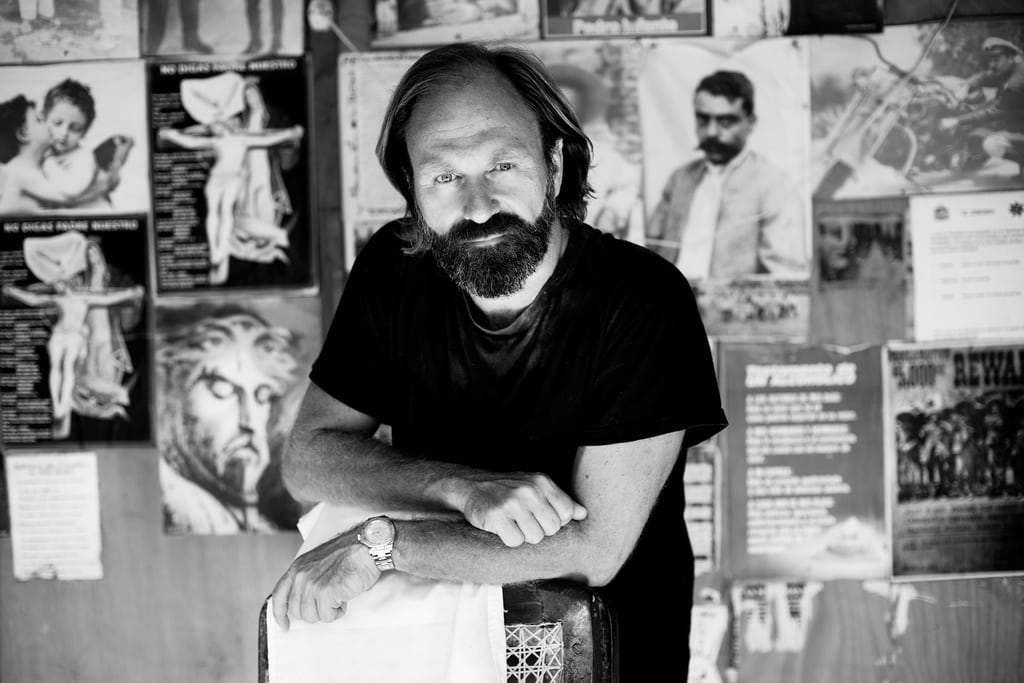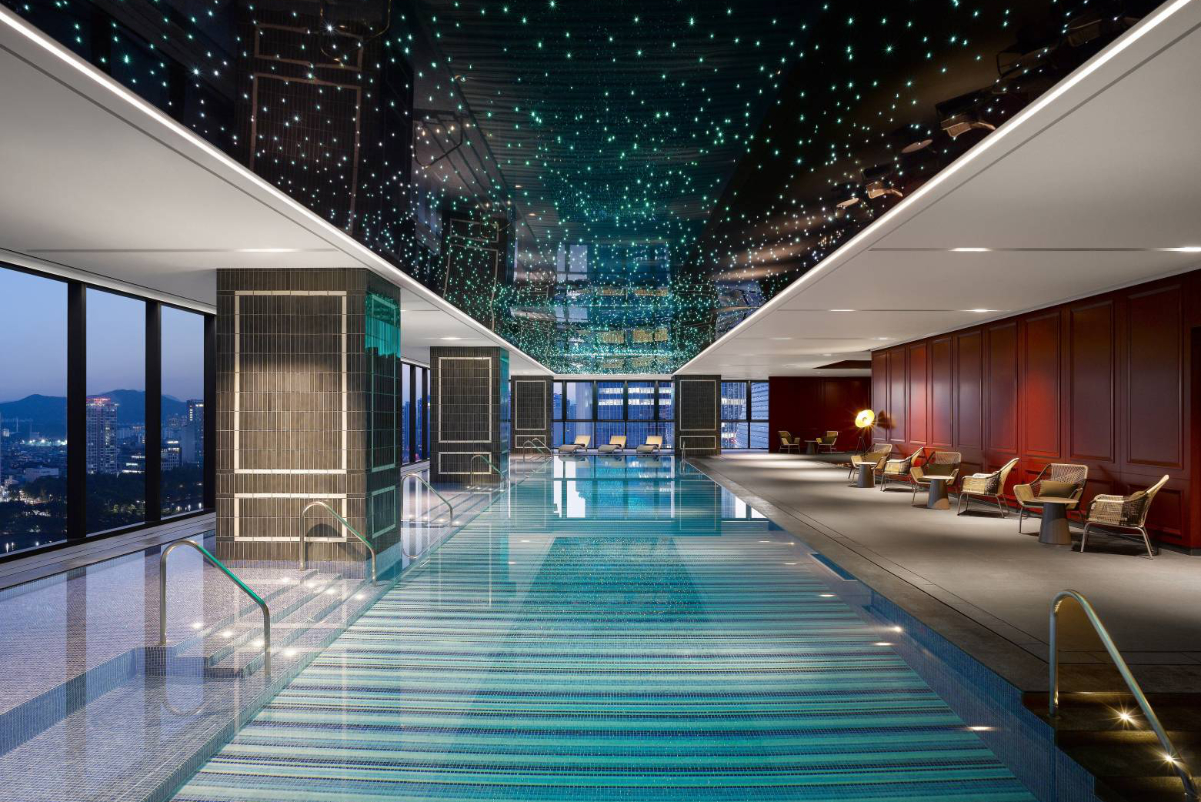Skift Forum Europe: Design Hotels CEO on the Independent Spirit in Hospitality

Skift Take
On April 4 in London, hundreds of the travel industry’s brightest and best will gather in London for the first Skift Forum Europe 2017. In only a few short years Skift's Forums — the largest creative business gatherings in the global travel industry — have become what media, speakers, and attendees have called the “TED Talks of travel.”
This year’s event at Tobacco Dock in London will feature speakers including CEOs and top executives from InterContinental Hotels Group (IHG), Norwegian Air, Google, Lonely Planet, Momondo Group, and many more.
The following is part of a series of posts highlighting some of the speakers and touching on issues of concern in Europe and beyond. See the complete list of amazing speakers and topics at this year’s event.
Design Hotels founder and CEO Claus Sendlinger will be speaking about the independent spirit of his member hotels and their owners at Skift Forum Europe on April 4 in London. We recently spoke with him about the formation of his marketing and distribution platform back in the early 1990s that helped scale a new hotel aesthetic and narrative around it across the hospitality marketplace worldwide.
Before launching Design Hotels, Sendlinger was working in Augsburg, Germany near Munich selling packaged ski tours to the U.S., in collaboration with a business partner based in Sausalito, California. He was also planning events and promoting concerts around Germany where he developed a network of DJs who were driving the rise house/techno music across Europe and the U.S.
Because of his work, Sendlinger was flying between Germany, New York, San Francisco, and Miami on a monthly basis, and his nightclub friends and travel clients were constantly asking for hotel recommendations in those cities. He said it didn't take long before he grasped how trendsetting design was emerging as a new driving force behind the early success of Ian Schrager's ultra-hip Morgans Hotels in New York, Bill Kimpton's European-style Kimpton Hotels in San Francisco, and Chris Blackwell's tropical-chic Island Outpost group in Miami.
At the same time, Sendlinger saw that a growing number of new hotels in various European cities were also experimenting with ambitious design, inspired primarily by the collaboration between Ian Schrager and Philippe Starck who were revolutionizing the hotel guest experience in America.
However, there wasn't an easy way for design-conscious travelers in those days to find these hotels. With relatively few resources at hand, Sendlinger was an early adopter of the internet as a marketing and sales vehicle to post hotel brochures online, saving the cost of mailing materials and faxing rate sheets. The big challenge for him at the onset was convincing the hotel owners to partner with Design Hotels, and provide their GDS codes, when no one at the time was familiar with what a "design hotel" even meant.
After a few years of attending hospitality trade shows to better understand the marketplace and develop partners, Sendlinger launched DesignHotels.com in 1993 with 20 trendy properties scattered across Europe. Today, there are more than 300 properties in the portfolio spanning the globe. From the beginning, Sendlinger has always selected member hotels based on a subjective criteria focusing on the overall guest interaction experience, innovative food and beverage, and the properties' impact on defining the local destination, as much as edgy architecture and interior design.
In a further effort to differentiate the brand, Design Hotels invested heavily in content promoting the member properties with stylish, photo-driven print and online storytelling, especially emphasizing the creative stamp of the hotel owners under the banner of "Made by Originals." That focus on the owners added a new layer of customer engagment around the brand; it provided a unique identity and human face to each property to help better define the specific hotel experience; and it positioned the hotels and their ownership as expert curators of the individual local culture and destination.
Following is more of the backstory behind Design Hotels in preparation for our live conversation with Sendlinger onstage at Skift Forum Europe 2017.
Skift: In your early career working with DJs in Germany as an event planner and concert promoter, how did that direct your journey toward launching Design Hotels?
Claus Sendlinger: I was always fascinated by youth culture and its influence on fashion, music, art, and pop culture. Seeing the DJs mixing vinyl in the ‘80s during the very beginning of house/techno, my prediction was DJs would be the rock stars of the 21st century. I was close to these guys. And then in 1990 there was a music industry event hosted at The Paramount in New York, which was owned by Ian Schrager and Steve Rubell, and designed by Philippe Starck, that changed everything. By bringing all these DJs into this space, everything began to spread like wildfire, and everybody was talking about it, like, wow, this new hotel was so cool and affordable with a complete lobby scene and this great bar. And then the media was another whole thing. When The Paramount opened, there were all these pictures in every single magazine around the world.
So after that, as these DJs and opinion leaders were traveling around the world and talking about these hotels, I was booking travel for them, and they were asking for similar hotels in places like London and Paris. And then they wanted to know: “What do you have in Cologne and Munich and Zurich?" and so forth. So it almost immediately clicked for me, and even though I had no idea what our business model was going to be, I knew there was something bigger happening in the industry that we could expand on.
Skift: How was the hotel design landscape evolving when you launched DesignHotels.com in 1993?
Sendlinger: My partner in California was a friend of Bill Kimpton, so one of the founding members of Design Hotels was the Triton Hotel on Grand Avenue in San Francisco, which is no longer affiliated with Kimpton. And then Chip Conley started Joie de Vivre, so in the Bay Area, there were lots of interesting small little hotels coming up. And then parallel to that, Chris Blackwell started to invest in South Beach, so it was really between Schrager in New York, Kimpton and Conley in San Francisco, and Blackwell in Miami,
This was so unique for us in Europe because it was driven by small chains, whereas in Europe, most of the interesting hotels were privately owned and managed, but they weren't nearly as cool and revolutionary in their design, which Schrager and Starck brought to a completely new level. It was the early 1990s, around '92 and '93, when the first hotels in Europe were beginning to subscribe to a strong design message as well. The hotels were much smaller, like 40 or 50 rooms. I think the Claris Hotel in Barcelona was one of our founding members. It was little bit bigger with 120 rooms but very edgy in its approach following the 1992 Olympics in Barcelona, when Barcelona was first recognized as a design city. The design that was applied to the Claris was about new kinds of materials and fabrics and styles, and it was much more subtle than what Starck was doing in New York, but it appealed to the same target group.
Skift: In 1993, Schrager, Kimpton, Conley, and Blackwell were all pushing the concept of "boutique hotels," which design is obviously an inherent part of, but how did the "design hotels" theme evolve into your company name?
Sendlinger: When we started in 1989, if you would have told anyone about design hotels, no one would have understood what you were talking about. Yes, the first term that was really created was "boutique hotels" by Ian Schrager, because he saw the big hotels more as department stores versus his hotels which were not really defined by size. The Paramount had something like 600 rooms, but it was more defined through the intimacy of the experience and the guest interactions. That's why he called it "boutique hotels."
So we were wondering, should we call our company Boutique Hotels as a conglomerate? But my passion was always parallel to what Starck was doing with hotel design. Also, nobody was talking about design, and we knew it was a generic term so you could not trademark it, and what the media likes is to make people understand design with photography, which we liked as well. So we thought if we build up the term "design hotels," it will become the term for the niche of the industry. So that's what we did, and we said at that time hopefully we will come up with the resources to further define the portfolio and how we curate it.
Skift: So how did you proceed to define the company's identity based on the selection of member hotels?
Sendlinger: Every hotel that applied for membership, which had like a red sofa in the lobby, started calling themselves a design hotel. We knew that could become a potential burden to the brand because we firmly believed that good design was just the beginning of every good product and experience in the 21st century. Suddenly we were receiving hundreds of applications every year from hotels that wanted to join, and we could have easily become a 1,000 to 1,200-hotel group very early, but then it would have diluted the portfolio. So we said instead of growing wider, and go for a business model like Mr. & Mrs. Smith or Tablet, let us rather go deeper and stick to this model where we help hotels to not only distribute online, but also help them to position themselves, help them to make a difference in their destination, and help them with their brand, their communications, and their global sales activities.
Therefore we created this criteria about what a hotel needs to comply with in order to become a member in Design Hotels, because the hotels were saying, "Give us a book of standards about how you choose us." But it is very subjective because there is always innovation out there, so if we create a standard on what exists, we might exclude the ones who are pushing the boundaries even further. So we decided we were going to create this culture in our organization where everybody who works in our company will learn how to judge a hotel by going through the lobby, listening to the music, talking to the managers at different levels, looking at the way they're communicating, looking at their web presence, and so on.
At the end of the day, all of this together always points back to the person who initiates the project. Many of our owners don't have a hotel background, which sometimes at the beginning makes the hotels a bit weaker in the classical service departments. But on the other hand, they often make it so much more exciting on the experience side, the art side, and maybe the food and beverage side, so guests learn more about the local neighborhood in the destination. I would say 90 percent of the owners are really movers and shakers in their neighborhood.
Skift: You have promoted the owners of your member hotels by producing a lot of content around the theme of "Made by Originals," focusing on the owners' individual histories that informed their hotel designs and development. Can you expand a little more on the strategy behind that?
Sendlinger: The common denominator at Design Hotels is really the originality of the creators, of the owners, of the investors. This is continually happening. The word that brings them all together is "Originals." What everyone is looking for in this experience economy is that unforgettable moment, you know, and that's why we came up with "Made by Originals." These are successful people with fantastic taste who have made a big impact in their destination, so even as a global chain, we can speak like a local in Seoul, or a local in Nairobi, or a local in Zurich. We choose these people, these creative directors, really, who have made their neighborhoods into important destinations because of what they do as hoteliers. I think the more luxury becomes accessible to everybody, the more the affluent traveler is searching for the hidden and secret spots that are truly unique and special. They're searching for something original, which is why we're well set for the future.





